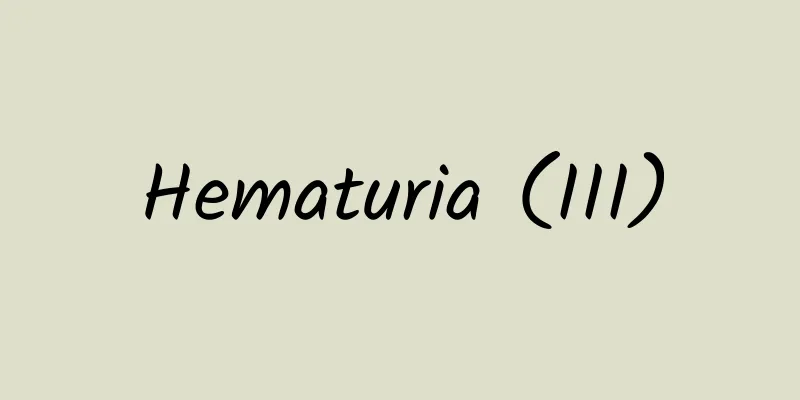What is the best way to treat postpartum mastitis?

|
What women fear most is the occurrence of inflammation in the body. If they had inflammation before having a baby, they could go to the hospital for treatment. However, after having a baby, mastitis is a female inflammatory disease that expectant mothers are more afraid of, because it not only directly affects women's physical health, but also affects feeding the baby. So what is the best way to treat postpartum mastitis? It is best to detect and treat mastitis early. 1. Pay attention to cleanliness: If it can be discovered in time in the early stage and correct treatment can be given in time, the patient's breastfeeding should be suspended, the nipple and areola should be cleaned, and milk should be discharged (using a breast pump or sucking). Those who need incision and drainage should stop breastfeeding. 2. Hot compress: This is one of the treatments for mastitis. Apply local hot compress, or wash 60 grams each of fresh dandelion and honeysuckle leaves, add a little vinegar or wine, and mash them for external application. Use wide bras or a wide belt to support your breasts. 3. Traditional Chinese medicine treatment: It is also an effective method for treating mastitis and has the effect of clearing away heat and detoxifying. The treatment of early mastitis is mainly manifested in the initial stage as milk stasis and internal heat and toxicity. The treatment principles are detoxification, clearing heat, promoting lactation and reducing swelling. Oral medication: You can take Trichosanthes and Burdock Decoction (Trichosanthes, Burdock Fructus, Radix Trichosanthis, Baicalensis Scutellariae, Tangerine Peel, Gardenia Jasmine, Flos Lonicerae, Bupleurum, Forsythia, Pangolin, Citrus aurantium, Citrus aurantium leaves and Rhizoma Chuanxiong). For swelling and pain, add frankincense, myrrh, and red spoon. 4. When treating mastitis, milk-reducing drugs should be used; at this time, breastfeeding on the affected side needs to be stopped and the milk should be sucked out with a breast pump. Appropriate use of lactation-reducing drugs can be used, such as oral administration of diethylstilbestrol 1 mg once, 3 times a day, or bromocriptine 2.5 mg once, 3 times a day. 5. Antibiotics: The treatment of mastitis can also involve the patient taking systemic antibiotics. To prevent and treat severe infection and sepsis, antibiotics are selected based on bacterial culture and drug sensitivity, and intravenous antibiotics are given when necessary. If mastitis is discovered after delivery, it is not recommended to breastfeed the baby, so expectant mothers must pay attention to their health before and after delivery. As for how to treat postpartum mastitis, it is recommended to go to the hospital for treatment, because mastitis is not a minor disease and it is likely to cause the onset of other diseases over time. |
<<: Why do I have stomach pain after having sex during my period?
>>: Symptoms of mild breast hyperplasia
Recommend
What should pregnant women pay attention to when taking medicine
Pregnant women refer to pregnant women, who are a...
What should pregnant women eat to promote lactation
Pregnant women do not need to induce lactation un...
What to do if estradiol is high? It turns out that they are the cause
Estradiol is what we often call estrogen, which p...
Six days after ovulation, the body reacts
Women have a certain ovulation period every month...
Girlfriend's menstrual period is irregular
Many boys who love their girlfriends are very con...
Can pregnant women with preexcitation syndrome get pregnant?
Preexcitation syndrome is actually what we often ...
What to do if you have cervical cysts? Treatment principles for cervical cysts
Cervical cysts are also a type of chronic cervici...
Symptoms of hydronephrosis in women
What symptoms will be accompanied by hydronephros...
We all know that good medicine tastes bitter, but how do you feed your child?
This is the 3567th article of Da Yi Xiao Hu "...
What causes pain on the left side during pregnancy?
Pregnancy is supposed to be a happy thing, but so...
Do breast cancers require chemotherapy?
Although breast cancer patients have better treat...
How to peel cashews with skin? Why are purple cashews cheaper than ordinary ones?
In daily life, we all know that nuts have high nu...
What should you pay attention to when your belly is bloated during early pregnancy?
During pregnancy, conditions are constantly chang...
What is the white sticky substance secreted from a girl?
Some women, after reaching puberty, will find tha...









